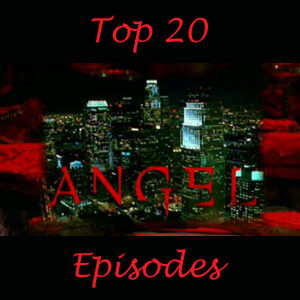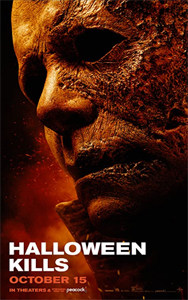Love or hate Blumhouse’s “H40” films, you have to respect how they stay firmly within the “Halloween” box while also giving us things we haven’t precisely seen before. “Halloween Kills” (Peacock and theaters) riffs on 1981’s “Halloween II” by chronicling the “later that night” portion of Michael’s depredations.
(SPOILERS FOLLOW.)
Haddonfield stays up late
This followup to 2018’s “Halloween” and lead-in to 2022’s “Halloween Ends” crams too much stuff into one movie, and thus doesn’t gain much forward story momentum. Only one main character has an arc – Judy Greer’s Karen, the daughter of Jamie Lee Curtis’ Laurie Strode – but she lacks the presence and screen time of a lead.
But writers Scott Teems, Danny McBride and David Gordon Green (who directs) never lose sight of their audience (because they are the audience): fans of the 1978 “Halloween” who like Michael Myers (James Jude Courtney and original actor Nick Castle) as “The Shape,” not as the brother of Laurie.
“Halloween Kills” (2021)
Director: David Gordon Green
Writers: Scott Teems, Danny McBride, David Gordon Green
Stars: Jamie Lee Curtis, Judy Greer, Andi Matichak
John Carpenter’s instinct to create a connection between Michael and Laurie in “Halloween II” wasn’t wrong. But the lazy way he did it always bothered Carpenter, which is why he’s on board with the “H40” trilogy.
“Halloween II” isn’t part of this timeline, but “Kills” very much reacts to that film. It’s mostly set at the Haddonfield hospital, and Laurie is largely helpless in her bed. The ’81 film is in that low-budget horror mold where the hospital is mostly dark and empty. It doesn’t make logical sense, but it’s a classic slasher setting.
In “Kills,” the hospital – and its attached morgue — is hilariously packed. Those injured or killed by Michael pour in, along with their concerned loved ones, and indeed the entire town.
Mob justice
This is where Blumhouse’s films diverge: They imagine all of Haddonfield is affected by Michael. Picking up in the direct wake of the 2018 film, we’re reintroduced to 1978 “Halloween” characters as a talent show wraps up at a local bar.
Kyle Richards is back as Lindsey, one of the kids Laurie babysat. Nancy Stephens returns as Marion, the assistant to Dr. Loomis. Over at the hospital, Charles Cyphers reprises his role as Sheriff Brackett, now a security guard.
Anthony Michael Hall takes over for Brian Andrews as Tommy Doyle (another of Laurie’s charges), and he’s arguably a second character to get a full arc along with Karen. But Tommy isn’t so much an individual as a stand-in for all of Haddonfield.

Hearing on the bar TV about the murder spree and the escape of two asylum inmates, Tommy leads an immediate effort to take back the night. It’s a darn impressive example of town unity. But it turns dumb as they attack the poor other guy who escaped – a guy who is nuts but not a danger to others.
No innocents?
As we begin to dislike Tommy, we also recognize that “Kills” has come to a thematic point, at least: Evil begets evil. Karen briefly chides Tommy for the death of the innocent man, but then she admits “None of us are innocent.”
So now Karen (whose name is apt after the recent popularization of “Karen” as an authoritarian tattle-tale) gets an arc. In the 2018 film, she reluctantly teams with her mom and her daughter (Andi Matichak’s Allyson) to trap and kill Michael.
After Michael escapes from the fire and kills the entire firefighting crew (one of the film’s many great spews of violence), Karen backtracks. She tells Laurie “the system” will take care of the Myers threat. But then – because Allyson is directly threatened — she changes her mind again and is front and center for the mob’s final showdown with Michael.
So “Kills” takes the likable Tommy and makes him flawed, and takes the unlikable Karen and redeems her. Sort of.
The movie is (surprisingly) not anti-police, but it’s also not pro-vigilante. It almost slots into appealing B-movie territory where the unfocused writing is part of the charm. But, let’s face it, it’s also part of why this film is less satisfying than it could be.
Where were you in ’78?
“Kills” is also hurt as a standalone experience because so many arcs are delayed until “Ends,” particularly that of Will Patton’s Officer Hawkins. But the way the writers incorporate him into the grander saga is awesome. I had complained that the 2018 film doesn’t tell us how Michael gets captured in 1978. “Kills” finally fills that plot hole and puts the young Hawkins (Thomas Mann) front and center.
The technical craftsmanship is on full display here as cinematographer Michael Simmonds and the Wilmington, N.C., location scouts take us back to 1978 for “bonus” scenes that tell of Michael’s apprehension on this timeline.
Later, the modern sequences have a nice Halloween-night atmosphere. A gay couple now owns the Myers house – it’s fun to see the complete interior redecoration – and fends off rare trick-or-treaters who employ a trick.
“Kills” is packed with side jaunts that are well-crafted but also keep the story from gaining momentum. Once it does, we get that “evil begets evil” mob-justice theme, which is something, but the execution is over-the-top.
Delayed gratification
A voiceover from Laurie plays atop Michael bouncing back from his shooting, beating and stabbing at the mob’s hands. This gets us to the Blumhouse thesis statement: Michael is an evil Shape, not a human being.
As the credits roll, we’re left to think: “OK, he’s a Shape, but is he, like, unkillable? Like, what if they chop his head off, or blow him up?” The original timeline delved into Michael’s nature and decided he is a supernatural being.
Blumhouse definitely won’t do that, so “Halloween Ends” has intrigue from the standpoint of “How the heck are they going to wrap this up while staying true to their grounded concept?”
“Kills” wants to be “The Empire Strikes Back” – a middle chapter that people will like because of how it expands the story, not because it tells a complete story. But “Empire” is aggressively forward-moving.
“Kills” is spends a lot of time catching us up with the past. While these scenes are good in a vacuum, the delay in forward movement creates an awkward viewing experience. It’s up to “Halloween Ends” to redeem “Halloween Kills.”

